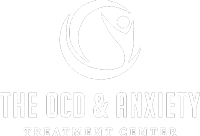
In the dynamic and competitive realm of B2C marketing, understanding the stages of the customer journey is essential for crafting compelling marketing strategies that resonate with consumers at every touchpoint. This journey, a detailed map of a consumer’s engagement with a brand, is pivotal in shaping customer experiences and driving conversions. Let’s embark on a comprehensive exploration of the customer journey stages, defining each and analyzing the types of content and campaigns that effectively engage consumers.
The Customer Journey in B2C: A Narrative of Engagement and Conversion
The stages of the customer journey in B2C marketing represent the evolution of a customer’s relationship with a brand, from initial awareness to the ultimate decision to purchase and beyond. This journey is critical for marketers to understand and cater to, as it directly influences how consumers perceive and interact with a brand
1. Awareness Stage: The Curtain Rises
The journey begins with the Awareness stage, where potential customers first encounter a brand or product. This stage is pivotal as it sets the tone for the customer’s perception of the brand. Here, the aim is to captivate and make a lasting impression.
In the Awareness stage, content and campaigns are designed to introduce the brand and its values in an engaging and informative manner. Educational content like blog posts, infographics, and videos that provide insights into the industry or address common consumer questions can be particularly effective. This is also where a robust SEO strategy plays a crucial role, ensuring that when potential customers search for related products or services, the brand appears prominently. Social media campaigns, leveraging platforms where the target audience is most active, can also be instrumental in building brand awareness.
2. Consideration Stage: Exploring the Possibilities
Following awareness, consumers enter the Consideration stage. Here, they start actively evaluating the brand’s offerings against their needs and other available options. The brand’s challenge is to stand out and demonstrate why its products or services are the best choice.
The Consideration stage calls for content that showcases the brand’s unique value proposition. Providing free trials or product demos can give potential customers a tangible experience of what’s being offered. Sharing customer testimonials and positive reviews can build trust and positively influence decision-making. Email marketing also plays a significant role in this stage; targeted and personalized emails that highlight product features, benefits, and how they differ from competitors can nudge the consumer closer to a decision.
3. Conversion Stage: The Moment of Truth
The Conversion stage is where decisions are made. It’s the culmination of the efforts put in the previous stages and is critical for turning prospects into customers.
Campaigns in the Conversion stage are designed to encourage the final purchase decision. Limited-time offers, discounts, and exclusive deals can be powerful motivators. Retargeting ads remind customers of the products they viewed, reinforcing their interest and guiding them back to complete the purchase. The design of landing pages also plays a crucial role, with clear and compelling calls-to-action that make it easy for customers to take the next step.
4. Retention Stage: Cultivating Lasting Relationships
After the conversion, we enter the Retention stage, a phase where the focus shifts to keeping the customer engaged and committed to the brand. This stage is pivotal in maximizing customer lifetime value and reducing churn rates.
Effective strategies in the Retention stage revolve around maintaining a continuous and meaningful dialogue with the customer. Personalized follow-up communications, such as thank-you messages, satisfaction surveys, and tailored newsletters, help keep the brand relevant and top-of-mind. Loyalty programs that reward repeat purchases or engagements are incredibly effective in encouraging ongoing customer interactions. Providing customers with early access to new products, exclusive offers, or special discounts can also deepen their commitment and sense of connection to the brand. The key is to make each customer feel valued and recognized as an individual, rather than just another sale.
5. Advocacy Stage: Turning Customers into Champions
Perhaps the most powerful stage in the stages of the customer journey is Advocacy. Here, satisfied customers become brand ambassadors, sharing their positive experiences with others and driving organic growth through word-of-mouth.
To nurture advocates, brands need to exceed expectations and deliver exceptional experiences consistently. Encouraging customers to share their experiences through reviews, testimonials, or social media can amplify positive sentiments. Brands can also engage advocates by involving them in community events, co-creation initiatives, or exclusive brand clubs. Recognizing and rewarding these brand champions not only strengthens their loyalty but also incentivizes them to continue spreading the word about the brand.
Optimizing the Journey: A Holistic Approach
Understanding and optimizing each of the stages of the customer journey require a holistic approach that aligns marketing strategies across all stages. This alignment ensures a seamless and cohesive experience for the customer, enhancing their journey from the first touchpoint to the last.
In each stage, the content and campaigns should be thoughtfully crafted and targeted, always keeping the customer’s needs and preferences in focus. Utilizing data analytics and customer feedback can provide invaluable insights into what works and what needs adjustment. The goal is to create a journey that not only attracts and converts but also delights and retains customers, turning them into lifelong fans of the brand.
Conclusion
The stages of the customer journey in B2C marketing are a roadmap to building and sustaining successful customer relationships. Each stage presents unique opportunities to connect with and understand the customer, requiring distinct strategies and content. Salesforce Marketing Cloud Engagement offers unique and powerful capabilities with Journey Builder to support the stages of the B2C customer journey. By effectively navigating these stages, brands can create a loyal customer base, drive sustainable growth, and establish a strong presence in the competitive B2C market. In today’s customer-centric landscape, mastering these stages is not just a marketing objective; it’s a crucial component of a brand’s success story.





























